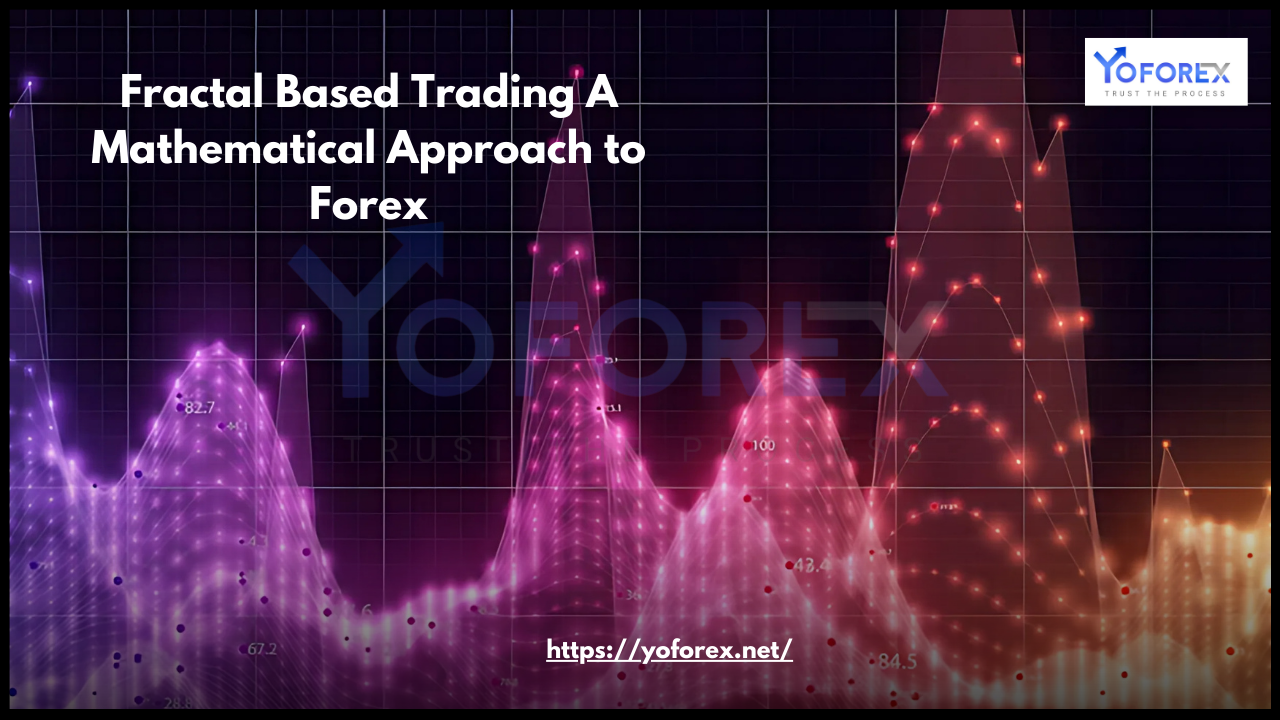The foreign exchange (Forex) market is one of the most dynamic and complex financial markets in the world. With trillions of dollars traded daily, it offers immense profit opportunities, but also significant risks. Traders and analysts are constantly seeking innovative methods to predict market movements and gain an edge. One such approach is fractal-based trading, a mathematical and technical analysis tool that leverages the concept of fractals to identify patterns and trends in the Forex market.
In this blog, we will explore the concept of fractals, how they apply to Forex trading, and the mathematical principles behind fractal-based trading strategies.
What Are Fractals?
Fractals are geometric patterns that repeat themselves at different scales. They are self-similar, meaning that a small portion of the pattern resembles the whole. Fractals are found everywhere in nature, from the branching of trees to the structure of coastlines and snowflakes. In the context of financial markets, fractals can be used to describe the repetitive patterns of price movements.
The concept of fractals was popularized by mathematician Benoit Mandelbrot, who observed that financial markets exhibit fractal-like behavior. Prices do not move in a straight line; instead, they fluctuate in patterns that repeat across different time frames. This insight forms the basis of fractal-based trading.
Fractals in the Forex Market
In Forex trading, fractals are used to identify potential reversal points in the market. A fractal is a specific price pattern that consists of five or more bars. The middle bar in the pattern is the highest or lowest point, forming a “peak” or “trough.” Fractals can be used to identify support and resistance levels, as well as potential entry and exit points for trades.
Key Characteristics of Fractals in Forex:
- Bullish Fractal: A pattern where the middle bar has the lowest low, surrounded by two higher lows on each side. This indicates a potential upward reversal.
- Bearish Fractal: A pattern where the middle bar has the highest high, surrounded by two lower highs on each side. This indicates a potential downward reversal.
Fractals are often used in conjunction with other technical indicators, such as moving averages or the Alligator indicator, to confirm trends and improve the accuracy of predictions.

Mathematical Principles Behind Fractal-Based Trading
Fractal-based trading relies on the mathematical principles of chaos theory and self-similarity. Here’s how these principles apply to Forex trading:
- Self-Similarity: Fractals in the Forex market exhibit self-similarity across different time frames. For example, a price pattern observed on a 5-minute chart may resemble a pattern on a daily or weekly chart. This allows traders to apply fractal analysis to multiple time frames, from short-term scalping to long-term position trading.
- Non-Linearity: Financial markets are non-linear systems, meaning that price movements are not always proportional to their causes. Fractal analysis helps traders navigate this complexity by identifying patterns that repeat despite the unpredictable nature of the market.
- Scaling Laws: Fractals follow scaling laws, which describe how patterns change across different scales. In Forex trading, this means that the same fractal patterns can be observed in both small and large price movements, providing consistent trading signals.
- Chaos Theory: Fractals are closely related to chaos theory, which studies the behavior of dynamic systems that are highly sensitive to initial conditions. In the Forex market, small changes in price can lead to significant trends, and fractal analysis helps traders identify these critical points.
How to Use Fractals in Forex Trading
Fractal-based trading involves identifying fractal patterns and using them to make informed trading decisions. Here’s a step-by-step guide to using fractals in Forex trading:
- Identify Fractal Patterns: Use a trading platform that supports fractal indicators (such as MetaTrader) to automatically detect fractal patterns on your charts. Look for bullish and bearish fractals that indicate potential reversals.
- Confirm Trends: Use other technical indicators, such as moving averages or the Alligator indicator, to confirm the direction of the trend. For example, if a bullish fractal appears above the Alligator’s teeth (a moving average), it may signal a strong upward trend.
- Set Entry and Exit Points: Use fractals to set entry and exit points for your trades. For example, you might enter a long position when a bullish fractal forms and exit when a bearish fractal appears.
- Manage Risk: Always use proper risk management techniques, such as setting stop-loss orders and position sizing, to protect your capital. Fractals can help you identify potential reversal points, but they are not foolproof.
- Combine with Other Strategies: Fractal-based trading works best when combined with other technical and fundamental analysis tools. For example, you might use fractals to identify entry points and Fibonacci retracements to set profit targets.
Advantages of Fractal-Based Trading
- Versatility: Fractals can be applied to any time frame and currency pair, making them a versatile tool for Forex traders.
- Objectivity: Fractal patterns are based on mathematical principles, reducing the subjectivity often associated with technical analysis.
- Early Reversal Signals: Fractals can provide early signals of potential reversals, allowing traders to enter or exit positions before major price movements.
- Compatibility: Fractals can be used alongside other indicators and trading strategies, enhancing their effectiveness.
Limitations of Fractal-Based Trading
- False Signals: Like all technical indicators, fractals can produce false signals, especially in choppy or sideways markets.
- Lagging Nature: Fractals are based on past price data, which means they may lag behind real-time market movements.
- Complexity: Fractal analysis requires a solid understanding of mathematical concepts and technical analysis, which may be challenging for beginner traders.
Conclusion
Fractal-based trading offers a unique and mathematically grounded approach to analyzing the Forex market. By leveraging the principles of self-similarity, non-linearity, and chaos theory, traders can identify repetitive patterns and make informed trading decisions. While fractals are not a standalone solution, they can be a powerful tool when combined with other technical indicators and risk management strategies.

